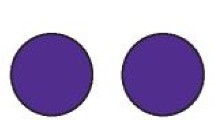Abstract
Data sources
Medline, Embase, relevant dental journals, reference lists of included studies and the World Health Organisation International Clinical Trials Registry.
Study selection
Studies evaluating the predictive accuracy of panoramic radiography for postoperative inferior alveolar nerve (IAN) injury reporting on at least one of the seven signs of IAN injury and providing data to calculate false-positive (FP), true-positive (TP), false-negative (FN) and true-negative (TN) proportions were included.
Data extraction and synthesis
Data were abstracted independently by two reviewers. Positive predictive value (PPV), negative predictive value (NPV), sensitivity and specificity were extracted or calculated. Overall pooled estimates of sensitivity, specificity, positive likelihood ratio (LR+), negative likelihood ratio (LR) (LR-) and diagnostic odds ratio (DOR), with 95% confidence intervals (CIs) were calculated using a random effects model. Summary receiver operating characteristic (SROC) curves were also generated. Study quality was assessed using the Quality Assessment of Diagnostic Accuracy Studies (QUADAS-2) tool (http://www.bristol.ac.uk/social-community-medicine/projects/quadas/quadas-2/).
Results
Eight studies were included. Only one study was considered to be at low risk of bias, one at low risk and the remainder at unclear risk. A summary of the pooled sensitivity, specificity and diagnostic odds ratios are shown in the table.
Conclusions
For all seven signs, the added value of panoramic radiography is too low to consider it appropriate for ruling out postoperative IAN in the decision-making before MM3 surgery. The added value of panoramic radiography for determining the presence of diversion of the canal, interruption of the white line of the canal and darkening of the root can be considered sufficient for ruling in the risk of postoperative IAN injury in the decision-making before MM3 surgery.
Similar content being viewed by others
Commentary
This well-reported systematic review from Su and colleagues addresses the role of panoramic radiography to predict IAN injury before MM3 extraction. With the availability of cone-beam computed tomography (CBCT) imaging it could be tempting to skip a simpler and cheaper exam such as panoramic radiography for a more irradiating, complex and expensive exam such as CBCT. But we must keep in mind that it is not the technology per se that makes the diagnosis, instead is the interpretation of the operator.
The review of eight diagnostic studies shows that as a general rule the absence of radiological signs does not predict the absence of postoperative IAN injury. On the other hand, the presence of one radiological sign, particularly one of those associated with alterations of the canal, namely diversion or interruption, or root darkening, is associated with a five-fold increment in the risk of postoperative IAN injury. Also, the presence of two or more radiological signs strongly suggests a true relationship between the MM3 and the IAN canal. As authors noted, 8% of those injuries recover spontaneously before six months and less than 1% last longer than that.
The authors recommend a further study that compares the performance of the panoramic radiography versus other imaging techniques. About this, a recent clinical trial found no difference in IAN injury between patients who undergo MM3 surgery after panoramic or CBCT imaging.1 Also, considering that a panoramic exam is on average four times cheaper than a CBCT exam,2 and that there is no difference in the resources used for surgery or patient complications rate between patients who undergo a panoramic examination vs CBCT before MM3 surgery.
Current digital panoramic equipment exposes a patient to a mean effective dose between 8.9 μSv and 37.8 μSv3 while a CBCT examination between 212 μSv for a large field of view (FOV), 177 μSv for medium FOV and 84 μSv for a small FOV.4
The main limitation of this systematic review lies in the included studies, with low risk of bias for 51% of the evaluated items, but all included studies show similar results.
This systematic review together with recent clinical trials, provides evidence about the utility of the interpretation of the panoramic radiograph for the prediction of IAN injuries after MM3 surgery.
References
Petersen LB, Vaeth M, Wenzel A . Neurosensoric disturbances after surgical removal of the mandibular third molar based on either panoramic imaging or cone beam CT scanning: A randomized controlled trial (RCT). Dentomaxillofac Radiol 2016; 45: 20150224.
Petersen LB, Olsen KR, Christensen J, Wenzel A . Image and surgery-related costs comparing cone beam CT and panoramic imaging before removal of impacted mandibular third molars. Dentomaxillofac Radiol 2014; 43: 20140001.
Lee GS, Kim JS, Seo YS, Kim JD . Effective dose from direct and indirect digital panoramic units. Imaging Sci Dent 2013; 43: 77–84.
Ludlow J B, Timothy R . Walker C et al. Effective dose of dental CBCT-a meta analysis of published data and additional data for nine CBCT units. Dentomaxillofac Radiol 2015; 44: 201590
Author information
Authors and Affiliations
Additional information
Address for correspondence: Dr Su, State Key Laboratory of Oral Disease, West China Hospital of Stomatology, Sichuan University, Chengdu, Third Section, Renmin Road South, Chengdu, China. E-mail: naichuansu@hotmail.com
Su N, van Wijk A, Berkhout E, Sanderink G, De Lange J, Wang H, van der Heijden GJMG. Predictive value of panoramic radiography for injury of inferior alveolar nerve after mandibular third molar surgery. J Oral Maxillofac Surg 2017; 75: 663–679. doi: 10.1016/j.joms.2016.12.013. Epub 2016 Dec 15. Review.PubMed PMID: 28041843.
Rights and permissions
About this article
Cite this article
Uribe, S. Radiographic prediction of inferior alveolar nerve injury in third molar surgery. Evid Based Dent 18, 88–89 (2017). https://doi.org/10.1038/sj.ebd.6401259
Published:
Issue Date:
DOI: https://doi.org/10.1038/sj.ebd.6401259



